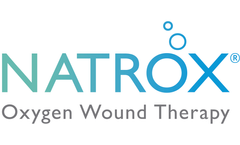Wound Bed Articles & Analysis: Older
13 articles found
Understanding the different wound types is essential for proper wound care. Here are some common wound types:Scrapes: A superficial wound caused by friction of skin against a hard surface. ...
In this non-healing amputation wound case study, NATROX® Oxygen Wound Therapy helped stimulate the wound bed, thus promoting wound healing in just 8 weeks. ...
Prevention of Infection:Strategies for prevention of infection in wounds both acute and chronic begin with the principles of wound bed preparation. Appropriate cleansing, frequent glove changes, debridement practices, and choice of topical interventions are necessary components of effective wound bed preparation. ...
Patient: 48-Year-old male suffering from non-healing surgical wound Medical History: Diabetes, vascular issues, PVD, not a candidate for vascular interventions or HBO treatment Wound History: Patient initially had 2 blisters on great and second toe that lead to great toe amputation. Patient was scheduled for BKA, yet the wound showed enough ...
Treatment of pediatric soft tissue wounds presents additional complexities and highlights unique requirements. ...
Preparation NovoSorb BTM is designed to integrate over a wound bed consisting of viable tissue: dermis, subcutaneous fat, muscle, paratenon, periosteum, etc. ...
Most superficial wounds (ones involving the epidermis and sometimes the partial dermis) heal quickly, often without scarring, and typically covered with readily available wound dressings. ...
Once the wound bed is cleaned and thoroughly debrided, surgeons can create a template by pressing the NovoSorb BTM against the wound bed. ...
How Long Does It Take for BTM to Fully Integrate with the Wound Bed? The time it takes for NovoSorb BTM to fully integrate varies among patients and can be influenced by several factors, including but not limited to the wound characteristics (e.g., anatomical location), patient’s age, and health status. BTM adherence to the ...
Complex wounds often involve exposed deep structures of the dermal layer, requiring prompt wound closure and tissue reconstruction. ...
Clinical research[1] indicates the temporization of deep, large wounds with dermal scaffolds can not only help provide physiological wound closure but also produce good functional and cosmetic outcomes. ...
Highlights A retrospective analysis of real-world data published in the ‘International Wound Journal’ compared the wound closure times for diabetic foot ulcers treated with either Endoform™ Natural (1150 wounds) or collagen/ORC (1072 wounds). The data was analyzed to evaluate the median time for ...
This increased flow can place pressure at the closure site leading to wound dehiscence. It is best in this population to use scaffolds where needed in order to build up to a robust granular wound bed that can later be covered with a skin graft. ...






